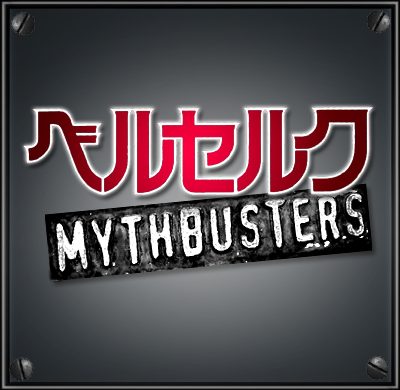
With nearly 20 years of history on the forum, we recognize that finding answers to common questions can be a laborious task, even with a working search feature. So last year, Aazealh and I worked on a podcast addressing the most common misconceptions of the series. In this thread, we've written out our answers, and expounded upon what we recorded way back then. We hope it will stand the test of time, helping others better understand a few of the series' more confusing elements.
COMMON MISCONCEPTIONS:
- Guts is outside FATE (and/or) Skull Knight is outside FATE.
- Guts needs a big power-up to kill Griffith, right? Well why doesn't he just use the beherit to become an apostle?
- Griffith didn't have a choice at the Eclipse, because there isn't true Free Will in Berserk.
- Griffith's sacrifice is incomplete because Guts and Casca are still alive
- Falcon of Darkness and the Falcon of Light. He is the savior of the world.
- They were on the boat for too long"
- The Black Swordsman Arc Spoils the Golden Age
- Guts plunging the Dragon Slayer into the heart of the sea god probably gave him a significant power up
- What exactly happened during the Incarnation Ceremony?
- Griffith = Femto = Griffith? I'm confused.
- What's the deal with the moonlight boy?
- What is Evil / Evil Power? Is there a difference?
- Why are apostles so different from each other? Are some more powerful? How does that work?
- What happened to Ganishka that suddenly made the world change?
- Who are the God Hand? What is their end goal?
- The Beast - what is it?
- What's the relationship between the Beast of Darkness and the Berserk's Armor?
- Beherits require blood to use, or can activate simply by making contact with blood.
- Is the Idea of Evil canon?
- Casca enjoyed the rape / Casca was already raped before Femto
- I've heard weird rumors about Kentarou Miura. How can I know which are true…?
- Guts is based on Götz von Berlichingen
- Episode < Chapter < Arc
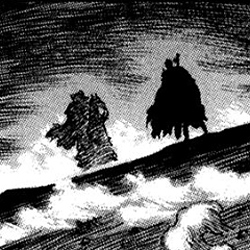
1. Guts is outside FATE (and/or) Skull Knight is outside FATE.
First off, there is no mystical force called "Fate" in Berserk. There is however a principle that is often referred to, and the correct word for it is "causality". It carries a pretty different meaning.
Fate means that something is bound to happen - it was determined in advance, and nothing anyone can do will change it. It implies an absolute supernatural control or vision over the future, like in Greek mythology.
Causality is the law of cause and effect - one event affects the other in a chain reaction that constrains the choices humans can make by circumstances beyond their control. Now, causality by itself is just a principle. What matters is who controls it. In Berserk, there is an evil entity manipulating humanity, from the broad state of world affairs down to their lineage, in order to implement its own plan for the future. This is what Skull Knight means when he talks about causality. He's referring to the manipulations exerted on humanity by the Idea of Evil and the God Hand.
The idea that Guts is impervious to that influence is preposterous. Two parts of the story are usually the cause of this misconception. The first is Guts' birth. Gambino tells Guts in volume 4 that "he should have died below his mother's corpse," but he wasn't speaking from special knowledge. That's just ravings from a lunatic. The Skull Knight also tells Guts in volume 9 that he's adept at avoiding death, since he's been doing so since his birth, but he's merely commenting (in his usual cryptic way) on Guts' incredible tenacity to survive and the resulting fighting skills.
But Guts did not survive in spite of what was planned for him, and that's made obvious by the central role he played in the rise and fall of Griffith, meaning in the creation of Femto. As this centerpiece and the trigger to the sacrifice, Guts was indubitably a key cog in the Idea of Evil's schemes. He was "the only one who made Griffith forget his dream", and so was the one to make him sacrifice.
The second cause of this misconception is the fact Guts exists within the Interstice between the corporeal realm and the astral realm. Because he's branded, Guts lives between two worlds, which is why he's harassed by evil spirits every night. There are a lot of side effects related to the brand, but it doesn't mean those afflicted are outside of causality's influence. The Skull Knight explains all of this in volume 18. He tells Guts, referring to the upcoming incarnation of Femto, that certain events are preordained, and that the events of the Eclipse are bound to be mirrored in St Albion. He also tells Guts that they both subsist within the flow of causality. But because Guts is in the interstice, he might be able to make a difference in things — to slightly change what goes on, like a fish creating ripples in a pond and altering the reflection of the moon on the water.
The reason he had can do that is because he's got a foot planted in the astral world, so to speak. People in the corporeal world can't do shit, they're powerless. But it's still a very small step. Furthermore, we have the confirmation in volume 34 that it's only during very specific times ("temporal junction points") that a difference can be made. It coincides with momentous events, like the incarnation of Femto or the advent of Fantasia. Because everything converges then, there's a chance to throw things off. But as we saw on top of Ganishka, even then, it's not at all guaranteed to be a success. The Skull Knight's attempt to stop Femto, for example, was not only foreseen but anticipated and used to achieve the God Hand's goals.
Two last things regarding Guts: he was branded by the God Hand. That mark is theirs, and it makes him shine like a light in the darkness. All evil creatures can feel his presence and are drawn to it. To think the Idea of Evil, the master of the God Hand, manipulator of causality and an entity said to dwell in the heart of every human (representing its dark side), can't anticipate him is naive. Slan also said she had been able to feel Guts "throughout countless nights," mentioning "at the tower and the cave" (Albion and the heretics cave).
Finally, Guts carries a beherit. Beherits are agents of the Idea of Evil. They emanate from it and are forever tied to it. It is the true master. Flora explains it to Guts in volume 24: a beherit cannot be activated ahead of its appointed time. Rather, the Idea of Evil, through causality, makes it so that it will be in the hand of the one who needs it when they need it. Now obviously Guts isn't going to use his beherit, but the fact he carries one means he cannot be invisible to the Idea of Evil. It's like if he had a tracking device in his bag, literally.
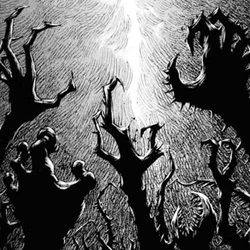
2. Guts needs a big power-up to kill Griffith, right? Well why doesn't he just use the beherit to become an apostle?
As we saw from Ganishka's example, apostles are subservient to the God Hand. You can relegate this to them being more powerful / higher on the demonic food chain. But to get granular, this likely has to do with the evil power that apostles are imbued with. The God Hand have an even higher concentration of that power, giving them dominion over lesser beings. Similarly, the God Hand serve a master born from that same power (who has remained in the shadows until now).
If Guts were to become an apostle, it would effectively end the series. Guts would no longer be a human, and the God Hand would have an unavoidable influence over him, just like what happened when Ganishka faced Griffith in Vritannis. Thus, the conflict at the heart of the series would come to a swift and unsatisfying end.
Maybe more importantly, it would violate one of the core themes of the series: a human struggling to fight more powerful inhumans. The core concept of Berserk is that Guts is "just a human". That he fights against overpowering enemies but still manages to scrape by. Making him into a monster, into the same kind of monster he's been hunting, would be a travesty and a betrayal of what his character stands for.
Furthermore, Guts is already an incredibly powerful warrior. Capable of handily defeating Zodd and Grunbeld's human forms, cracking Grunbeld's corundum armor, wounding a member of the God Hand and scattering Ganishka's astral projection. With the Berserk's Armor equipped, it's currently debatable who would win between Apostle-form Zodd and Guts. Thus, even if apostles weren't subservient to the God Hand, the improvement by becoming an apostle wouldn't be a game changer.
Going into the particulars, it's also hard to imagine how any of this would work. We're not sure apostles are even being made the old way anymore. And who would Guts sacrifice? Casca, the one he loves above all else, already bears the brand of sacrifice and cannot be sacrificed again. And does anyone think the God Hand would grant him power so he could fight them? It's not like there are strict rules and you can game the system. Someone becoming an apostle is something the Idea of Evil plans for a long time in advance. Which is exactly what Flora told him when Guts asked if there was a way to use the beherit to get to the God Hand. It just doesn't work like that.
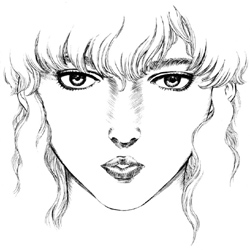
3. Griffith didn't have a choice at the Eclipse, because there isn't true Free Will in Berserk.
Free will exists in Berserk, but it is constrained by Causality. A common view that misconstrues free will in Berserk says that Causality has rendered humanity into automatons, fully programmed to execute the Idea of Evil's pursuits. But Causality is not mind control. Time after time, we see that humans are being led by a very influential force, but not an all-powerful one. They must decide how they act. The God Hand and the Idea of Evil provide scenarios for humans where their viable options are limited to those that benefit the God Hand's plans. But human hands are not forced. Instead, they're coerced by circumstances, which are the results of centuries of manipulations.
This notion is reinforced authoritatively by those who would know (Flora) and thematically by characters Miura has established as wise about the ways of the world (Luka). It's even a theme in the Berserk Dreamcast game (in a great scene with Dunteth and Rita about ancestry).
We have also seen how Causality's manipulations manifest:
1) By all accounts, the Count should have sacrificed Theresia. All the pressure points we traditionally see in Causality were there. But he chose not to, he died, and the ceremony ended prematurely.
2) Mule also gives us a pretty insightful monologue about feeling like he was pulled to do something against his natural inclination, just before he dedicates himself to Griffith.
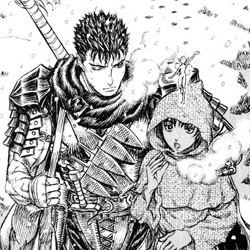
4. Griffith's sacrifice is incomplete because Guts and Casca are still alive
Whether they're alive or not is irrelevant. The sacrifice is the choice Griffith made to offer them up in exchange for power. It was completed by the act of branding their souls. Once they are branded, the sacrifice is complete. And while most sacrificed people die immediately after, it doesn't matter in the end - the deed was done, and Femto was effectively born.
It's not like people's deaths are the prerequisite for the transformation process. We see their blood pumped, but clearly not ALL of it was needed (hence the Red Lake). It's like the icing on a cake -- you can have leftovers.
If Guts and Casca's survival held any leverage over Femto, thus the God Hand's plans, it would have been addressed. It'd be a rather obvious oversight for semi-omniscient beings, and they've had plenty of chances to kill them both, Guts in particular, which they didn't care about.
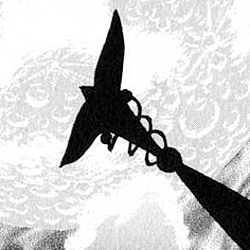
5. The Falcon of Darkness and the Falcon of Light. Who is it REALLY?
There has been a lot of confusion about this over the years. Very simply: Griffith is both the Falcon of Darkness and the Falcon of Light. He is, after all, the only character referred to as a falcon in the series. When you say "The Band of the Falcon", falcon is singular, not plural. Its members aren't "falcons", they're the soldiers of the Falcon. It's important to understand that.
People are often confused because the Holy Iron Chain Knights (whom Farnese commanded) once mistook Guts for the "Falcon of Darkness" who was foretold to appear in an old prophecy. But the "Falcon of Darkness" is of course a reference to Femto (who is also nicknamed "the Wings of Darkness" during the Eclipse).
The prophecy is: "When the sun will have died five times, a red lake will appear at the west of the city with a name both new and ancient, and it will be the sign that the fifth angel is born. The angel shall be a Falcon of Darkness. Both master of the sinful black sheep and king of the blind white sheep. The one who shall bring an age of darkness upon the world."
The Falcon of Light is a hero foretold in the holy book of the Holy See. It is said to be a holy savior. The Pontiff declares Griffith to be that person in episode 285. It is also an avatar Femto uses to appear in people's dreams. It first showed up in volume 17 in the dreams of Raban, the King of Midland, Zodd and Guts. Everyone in Midland and the surrounding area saw it. It appeared again in volume 33, to the kids still living in Wyndham. It appeared to the Pontiff himself, which made him declare Griffith to be the prophesied hero. And it lured Ganishka towards Griffith after his transformation into Shiva in volume 34.
Now if you'll recall the prophecy, it says the Falcon of Darkness is "Both master of the sinful black sheep and king of the blind white sheep". Well, the sinful black sheep are of course the apostles, and the blind white sheep are the followers of the Holy See, or more specifically the people now living in Falconia.
So I guess the question is: is Griffith really the savior of the world? Well, no. Despite his fair skin and white armor, it's still Femto underneath, and he's still an evil guy with an evil agenda. We just don't exactly know what that agenda is yet. However, let's not forget that Griffith made the world change on purpose.
Falconia is mankind's last bastion, but only because Griffith turned the world into monster-land in the first place. He could have stopped Ganishka in Vritannis, but he pushed Ganishka to the point of desperation, knowing that he would use his artificial beherit. Then he tricked the Skull Knight into attacking him, and used both of them to unleash this situation. And of course, Griffith didn't orchestrate all of that himself, it was minutely arranged over decades (centuries even) through causality by the Idea of Evil. Which brings us to the fact that we see, in the last episode of volume 34, four big two-page spreads, one for each member of the God Hand besides Femto.
The implication is clear: when the astral world was unleashed into the corporeal world, the remaining members of the God Hand were as well. Femto, who had been sent as the vanguard, opened the gates for his pals. Meanwhile, almost ALL surviving humans (meaning those who weren't killed when Femto changed the world) are now confined within ONE place that's under Griffith's control and also happens to house every apostle ever created. The only people who tried to leave the city that we know of were attacked by Rakshas. I think you get the picture. We don't know what evil plan the God Hand has in mind, but it's coming, there's no doubt about it.
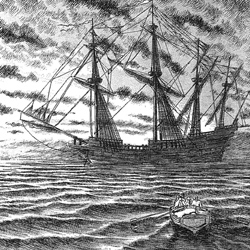
6. They were "on the boat" for too long.
To start with, the Sea Horse is a war ship, not a boat. They embarked on it in volume 32, and arrived at their destination in volume 38. But it's important to remember that a large portion of those volumes takes place on Griffith's side. That aside, the events that took place while they were at sea have been pretty damn cool. Some great character development, a couple of cool sea battles, and a little horror story on a mysterious, creepy island with a dark secret (which technically did not occur "on the ship"). If you're a fan of H.P. Lovecraft's work, it should be a delight to see Miura's take on it.
The entire sea trip takes up 30 episodes, which is roughly 3 volumes if you put them back to back. However, if you only count the time they're actually "on the ship", not counting the island or the flashback, then it's just one single volume. And it'd still be selling Berserk extremely short to pretend amazing things don't take place in every single one of those episodes. They're densely packed with cool stuff to take full advantage of the setting, with the bulk of the actual journey happening off-page. And honestly, it would have been a monumental waste to not feature the sea journey at all (and people would have complained). It also wouldn't have appropriately conveyed its actual length and the distance traveled. Plus the story would have not featured Guts for several volumes.
Whether they were in transit longer than some people care for is a matter of taste. But there's no argument for the "ship stuff" being a nonessential middle portion between A to B in their journey, because Guts and co have been on a journey to Elfhelm since Volume 22, waaaay back in 2001. Since then, they encountered adventures on land, then they got on Roderick's ship and encountered an adventure on sea. Structurally, there are no problems here.
Narratively, I think Miura wanted to demonstrate how the world had changed after the Blast of the Astral World, and the group happened to be at sea, so he chose to manifest that in the Sea God. I don't think I've seen many complaints about the design of the Sea God, or how fucking cool it was that Guts catapulted himself into its mouth to kill it from the inside out. That's pretty classic Guts material. It's the fact it was happening through long hiatuses that seems to have created this stigma on this part of the series.
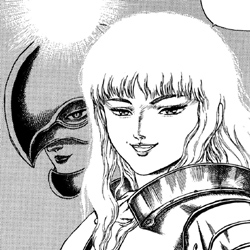
7. The Black Swordsman Arc Spoils the Golden Age
When people ask where to start the series, there are often people who say to start chronologically with the Golden Age, because by the end of the Black Swordsman Arc, beherits and sacrifices are explained, along with the fact that Griffith ends up as a member of the God Hand and the enemy of Guts. Despite this being how the story was designed by Miura, some believe this "spoils" the dramatic tension in the Golden Age.
I've never truly understood this notion. It ADDS tension, because along with every success the Band of the Falcon experiences, every friendly glance Griffith gives Guts, there's a twinge of pain, knowing that the knife is going to be plunged in and twisted at some point - and it's not immediately clear how or in what way that tragedy is going to turn. And those light-hearted scenes between the members are DESIGNED to instill that kind of dread, because you know they're going to be sacrificed. There's also the added mystery of Casca - will she be gone along with the others?
The surprise of the Golden Age isn't "what's going to happen?" It's seeing exactly how Guts and Griffith's relationship fell apart and they became enemies. None of that is present if you go in uninitiated.
Furthermore, if you didn't have exposure to the Black Swordsman Arc, the elements it introduces: beherits, apostles, the God Hand, sacrifices and so on would all feel like they came out of left field. And in fact, that's how many fans who just saw the 1997 anime felt about the Eclipse, having not been really oriented to the fantasy elements that are at the core of the series.
Miura wrote the story the way he did for a reason. The Golden Age arc is a flashback, not a misplaced origin story. It is meant to be read as a flashback, even though it's an unusually long one. A ton of elements and situations just cannot be properly appreciated and understood by the reader unless they have read the Black Swordsman first. The pleasure for the reader is in putting two and two together based on what they already know and in trying to guess where things are headed. That's how it was all designed. It's by reading the story out of order that you're actually spoiling yourself. And you're depriving yourself of a badass introduction to the series, too.
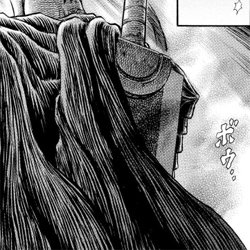
8. Guts plunging the Dragon Slayer into the heart of the Sea God probably gave him a significant power up
What the Skull Knight says about the sword's properties in Vol 26: it has been imbued with the remnants of thousands of evil beings that Guts has cleaved over the years, including everything from apostles, specters, incubi, possessed creatures, etc.
Guts isn't absorbing new power from each enemy he kills, and he isn't getting MORE power from enemies higher on the food chain. That is not how it was explained and that wouldn't even make any sense.
It's important to understand that the ability to damage enemies on the astral level has not made the Dragon Slayer "more powerful." It makes it a more versatile weapon, able to reach more in terms of what it can strike. The showdown with Ganishka in Vritannis exemplified this additional property pretty well. Zodd's got some buff arms and a mean horn, but they couldn't do shit against Ganishka's fog form. But the Dragon Slayer did, and it didn't have anything to do with how "powerful" it was. It was simply able to reach Ganishka's astral self in a way than a purely corporeal weapon couldn't. The same thing happened with Slan in the Qliphoth.
Just like Guts straddles the physical and astral worlds, his battles have made his sword do the same.
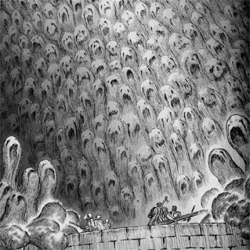
9. What exactly happened during the Incarnation Ceremony?
The members of the God Hand are spiritual beings. They don't have corporeal bodies; bodies made of flesh and blood and bone. They're spirits, and so they inhabit a deep region of the astral world. That means they also cannot easily manifest themselves in the corporeal world. The Incarnation ceremony was a "once in a thousand years" event made to force a member of the God Hand into the corporeal world. To do the impossible: give him a body of flesh. That's why it's called the incarnation: because Femto (an spiritual being) is incarnated, which literally means he is "put into flesh".
It was the first step of the God Hand's offensive into the real world. Femto, who had been born 2 years before, was the ideal choice for their vanguard. He took over the body of Guts and Casca's son to use as his vessel, and arose as a new Griffith. Of course it should be noted that it's not like the old Griffith returned: this is still Femto, just wearing a costume.
The immediate result was the reshaping of the world: Femto's presence in the physical world is unnatural to the properties that govern it, so it became warped, and cracks began forming between it and the astral world. Femto, as Griffith, further exploited those cracks and finally opened a monstrous rift that gave birth to Falconia. The whole world was reshaped. In the process, the other four members of the God Hand gained access to the corporeal world.
As for why it happened in the first place: after the God Hand was made complete with Femto's birth, the Idea of Evil moved on to the next part of its plan. Everything had been prepared, and it was all interlocked into the bigger scheme it's weaving.
Many things came together during that event. The land had become desolate because of the Hundred Year War. That led to a plague which caused thousands of people to die. The king's armies were too occupied with the endless search for Griffith to do anything to help the populace. People were desperate all over Midland and some gathered at St Albion in the hopes of getting help from the Holy See. But the place had a history of torture and misery and they found no relief there. Yet their dreams were filled with visions of a savior. The beherit apostle had been created there and sacrificed the world around him, meaning the land around Albion. Guts and Casca, two branded people, were at the heart of it. It was even the full moon, which heightens magic power. That maelstrom fueled the appearance of gigantic masses of specters, which Puck explains in Vol 21: the manifested malice of those who have died of plague or torture, "full of their bitterness and desire for salvation", which of course becomes a kind of medium for Femto's incarnation.

10. Griffith = Femto = Griffith? I'm confused.
Sometimes we get questions like, Who is Femto? Was he a separate, demonic being? A split personality of Griffith's? These are misunderstood embellishments on the truth, which is that Femto was what became of Griffith when he embraced evil power and transcended humanity. That process twisted his nature, like it does with everyone. But there were shadows of what Griffith would become, aspects of Femto you could say, in a number of scenes with Griffith in the Golden Age. For example, his cold stare exhibited at Foss, the Queen, and even when he saw Guts and Casca together after the rescue at the Tower of Rebirth, these glimpses at the darkness inside him are now the embodiment of Femto.
But the truth is fairly straightforward: during the Eclipse, Griffith became Femto -- a member of the God Hand with a purely astral form. He was literally transformed into Femto. Reborn as Femto. His physical body was dissolved and his astral body was reformed, rearranged by evil power into that of Femto.
So Femto is not a new entity, it's an evolution of Griffith into an evil supernatural entity. In the process of that transformation, Griffith changed irremediably. His mind, his motivations, his personality.
As we just mentioned in a previous question, later on Femto was incarnated, meaning he acquired a new physical body. Logically enough, that body was shaped to look like the one he originally had as a human. But that new Griffith isn't human. It's still Femto. He hasn't regained his empathy, nor has he changed in any other way. The very nature of his being is profoundly different from what it had been when he was human.
The one wild card that was introduced by that incarnation process is that the original inhabitant of the body, the son of Guts and Casca, was not destroyed. His consciousness still exists, somewhere deep down. This is shown in volume 22, when Griffith confronts Guts on the hill of swords. And that fact, the boy's survival, may prove to be very significant in the future.
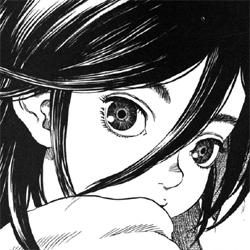
11. Whaaaat's the deaaaal with the boy in the moonlight?
The boy's identity has not been officially confirmed by the manga yet, but clever readers can put together a pretty solid thesis. He is Guts and Casca's son, appearing to rescue his parents from terrifying scenarios on full moons. He was born as a "demon child" but after being incorporated into the Incarnation Ceremony as the "flesh" of Femto's incarnation, the boy can apparently manifest on full moons, which "makes minds more unhinged" and during which magic is more effective. We saw on the Hill of Swords that the boy can influence Griffith's actions. He forced him to rescue Casca from falling boulders (just like he rescued Casca any number of times previously). And on full moons, he can apparently appear as his own self and visit his parents.
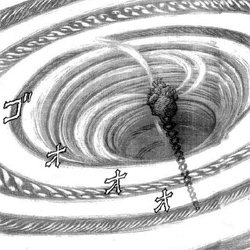
12. What is Evil / Evil Power? Is there a difference?
Some people like to get into philosophical arguments about the relative nature of evil and so on when it comes to Berserk.
That's because the term evil is referenced a lot in the series in relation to apostles and the God Hand and their power. For example, Ganishka slanders Locus about the tiny amount of evil power within him (versus himself). Conrad talks about evil pouring into a heart of apostles as part of the transformative process of sacrificial ceremonies.
But the Japanese word (魔) [MA] used in Berserk doesn't just mean "evil" as a moral concept, but also "magic". So it is a power that can be harnessed. And based on the visuals from the non-canon Episode 83, the Vortex of Souls is likely the medium for that power. As a reminder, the Vortex of Souls is where all the evil human souls are gathered.
Because it references magical power, it does not exclusively mean moral evil, but because it is associated with pretty evil people, yes, they're one and the same. But a character can be evil without possessing evil power like the apostles and the God Hand.
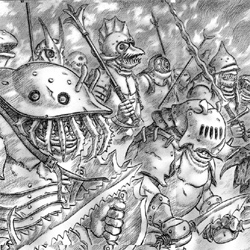
13. Why are apostles so different from each other? Are some more powerful?
As established early in the manga, apostles were once humans. They were transformed into supernatural monsters by having their souls transformed by evil power. Their monstrous bodies, which they can phase between at will, are the result of that infusion of evil power. This is why when they die, when their soul is taken away to the Vortex of Souls, their body reverts to its human self. Because the corporeal body itself isn't imbued with evil, it's only twisted as a reflection of the soul.
Like human beings, their appetites for depravity are varied. But they are all fundamentally evil beings, due to the infusion of evil power in their souls, and of course, the sacrifice they made.
Apostle forms also vary quite a bit. From a minotaur to a metallic centaur to a tiny snail guy. The easiest way to understand that is... their apostle forms are dark reflections of who they were as human beings, infused with evil power. Proud warrior before? Their apostle form is a reflection of it. Slothful loser without much direction in life? Their apostle form is a reflection of it. Then there's of course the practical factor to consider: Miura's desire to create interesting, varied character designs for his big-name apostles, and have them be distinct from the lower-tier ones.
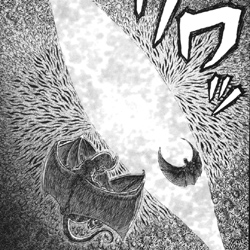
14. What exactly happened to Ganishka that made the world change?
This is probably the most asked question I've seen about Berserk in recent memory. To understand this, you need to understand 3 major components:
- The 3 overlapping worlds
- The effect of Skull Knight's beherit sword technique
- What Ganishka had become, and where his power came from
As explained by Schierke and Flora in Vol 24, there are three overlapping worlds in Berserk: corporeal, astral, and ideal, each with their own properties and rules. Humans, plants and animals occupy the physical world.
Magical beings occupy the astral world. There's a wide range of them, going from trolls to elves, specters and other such fantastic creatures. The deeper you go, the more otherworldly the beings become. Like the spirits Schierke calls on for help, for example, or greater beings like the four Kings of the World. That's also where the God Hand resides. At the bottom of it is a great ocean of human souls, where souls are separated according to their karma. It features a big whirlpool we're all too familiar with: the Vortex of Souls. That's where the souls with bad karma go to.
The ideal is the formless world of ideas. It is loosely based on Plato's Theory of Forms (also known as Theories of Ideas), so it's not just like a place where "ideas" float as you'd understand the common definition of the word in English. It's more akin to the concept of things. Anyway, practically nothing is known about it.
Beherit Sword Technique:
Beherits are inherently linked to the deepest parts of the astral world, or maybe even beyond that. That is how, when they activate, they allow humans to be brought to the God Hand, deep down into the astral world. By coating his blade in them, SK converts their natural dimension-crossing ability into a weapon that cuts through the layers of the world. Think of it this way: beherits can prick a needle-hole into the fabric of the world, which is then widened to bring people to the God Hand. By melting a bunch of them within his magical armor and coating his sword in them, SK can cut a tear through that same fabric.
The Skull Knight created that technique with the goal of destroying the God Hand.
Artificial Beherit:
Ganishka plunged himself into his "artificial beherit," a contraption that used dozens of captured apostles to create a portal to the depths of the astral world. They had been using it to create the Daka by imbuing human fetuses with evil in their mother's womb. To confront Griffith, Ganishka descended as deep as he could, and absorbed as much power as he could. When he returned, he'd been filled with so much power, his corporeal form wasn't enough for it, resulting in a gigantic body that expanded until it reached though the clouds, and he went mad, unable to handle that much power.
Blast of the Astral World:
The Skull Knight struck at Femto with his beherit-sword, but Femto was expecting him. He intercepted and twisted his attack so that it struck Ganishka instead, cutting through him on the astral level. Like an overblown balloon that tears in the middle, Ganishka was ripped inside out. The enormous astral power that he had brought forth washed over the corporeal world, covering it integrally in one big wave of light, now known as the blast of the astral world. Thus the worlds were no longer separated, they became one -- Fantasia.
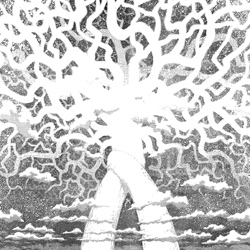
14(b). Okay, but why did that big explosion usher in a new world filled with fantasy creatures?
When Ganishka was split open, it didn't just spill an enormous amount of spiritual energy over the world. It also created a giant rift. As you'll recall, something took Ganishka's place. A giant tree. It's called the World Spiral Tree, and it links the two worlds together like a 4-dimensional rupture. It's pulling them together, causing them to merge. Hence, creatures that were previously never or only seldom seen (through small tears between the worlds) are now everywhere.
It's important to note that by the time Ganishka exploded, the terrain had been prepared. Femto's coming into the world had already opened up the way a little (which is why we saw isolated incidents like the trolls in volume 24).
We also recently learned that Spiritual Trees existed all over the world, acting as a kind of safety valve against the merging of the worlds. They drained the power of the World Spiral Tree to prevent it from linking the corporeal world and the astral world together. They were also each protected by a magician. But almost all of them have been destroyed by the forces of evil to make way for Fantasia. Flora's tree was one of these.
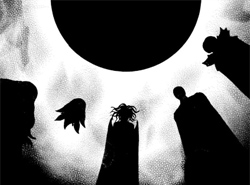
15. Who are the God Hand? What is their end goal?
They were once humans, now endowed with incredible powers by making mass sacrifices. They serve as the executors of the will of their master, the Idea of Evil, who has been shaping human events for more than 1,000 years. We don't know their full plan yet. But they have greater access to the world of humans than ever before, and have managed to park almost all surviving humans into one giant city. They've also seemingly rid the world of most magic users, meaning no one can oppose them or even understand what the hell is happening. People are literally sheep being placidly led to the slaughter. The God Hand's control over mankind seems almost absolute.
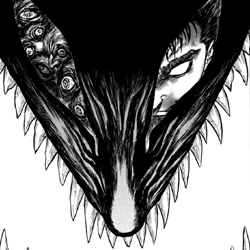
16. The Beast of Darkness - what is it?
Stated plainly, the Beast of Darkness is the psychological manifestation of the trauma Guts endured at the Eclipse, and that gradually grew during the time that he shrouded himself in darkness, hunting apostles alone as the Black Swordsman, pushing the limits of his body and his sanity. It's not supernatural and it's not a separate entity: it exists only in Guts' mind. This is confusing to some people because of how it's portrayed to readers as a physical manifestation.
The reason the Beast of Darkness is portrayed like this is to make it more interesting to the reader than, say, to have Guts mumble to himself and act like a schizophrenic. It's a technique called "personification", or I guess in this case "zoomorphism". Basically, an abstract feeling is given a tangible form because it's a much cooler and more visual way to tell the story. Think of it like in classical theatrical plays, where "Time" or "Death", for example, is shown as a character. Same thing here.
So when the Beast of Darkness talks to Guts, it's essentially Guts talking to himself, and it shows in Japanese. The dialogue is written as someone talking to himself. It's the darkest part of himself pushing forward. All his negative emotions: hatred and rage, but also fear, sadness, and guilt. In a way, you could equate it to Freud's concept of "death drive", as opposed to the "will to live". It wants Guts to drop everything and run at Griffith's throat to satisfy his craving for revenge, which would be suicidal. Many times Guts has had to be pulled back from suicidal or negative tendencies as a result of this bestial aspect.
The Beast of Darkness' goals are very straightforward: it just wants Guts to go kill Griffith. To revel in his revenge, not caring for anything else. The reason it pushes for his friends and especially for Casca's death is because they prevent him from doing that. They're a hindrance. They make him hold onto life, they make him care about other things. Guts has put his vengeance aside in order to care for Casca, and the Beast of Darkness just can't endure it. What this shows is something we already know: that while Guts chose Casca over his revenge, deep down he hasn't let go of that desire.
One last thing: The Beast as we know it did not exist until after the Eclipse. Often people try to combine Guts' rage-filled white eyes with the Beast, but that's a visual cue that exemplifies Guts' fighting spirit, which is now a trait the Beast shares with Guts - but it is not the Beast. Rather, the Beast of Darkness should be viewed as a manifestation of Guts' trauma from the Eclipse, much like Casca's own trauma has driven her insane, trapping her mind inside a nightmare of her own creation.
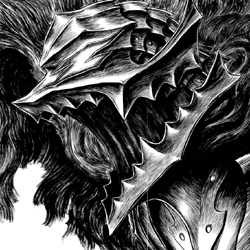
17. What's the relationship between the Beast of Darkness and the Berserk's Armor?
The Berserk's armor is a cursed magical item that suppresses people's pain and fear. It eliminates their inhibitions while emphasizing their fighting instinct. It pushes its user beyond the limits of the human body. All of this is achieved because its Od (spiritual essence) is like a great flame that engulfs the Od of the one who wears it. The cursed part comes from the fact that the user doesn't care anymore whether or not they're injured. They just keep going and going, fighting mindlessly. And the stronger their will to fight is, the stronger the effect is. That means they also don't fight particularly intelligently, like they won't necessarily dodge an attack even if they could, and don't recognize friend from foe anymore. Hence the name.
As we just discussed, the Beast of Darkness is a representation of the dark side within Guts' mind. And we know that the Berserk's armor works by boosting the wearer's aggressive side and suppressing everything else. Therefore, what better symbol for it to take than the Beast of Darkness? It is what symbolizes Guts' rage and hatred against his sworn enemies. Also, note that this is something the armor does for everybody, as far as we know. It's not specific to Guts. Case in point: the armor's previous user was the Skull Knight, which is why its helmet was shaped like a skull when we first saw it. It adapts to a new user when it is first worn, taking the shape that best mirrors their psyche.
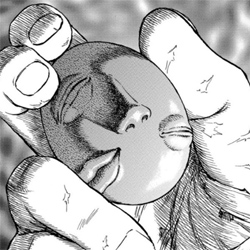
18. Beherits require blood to use, or can activate simply by making contact with blood.
This is a very common misconception that stems both from how most beherits are depicted once activated, and a misunderstanding of how beherits actually activate. The presence of blood in most instances of the beherit being activated is incidental. Yes, it was present for the most iconic moment of activation - the Eclipse, but a counterexample is the count's beherit, which was sitting on a nearby table, on a pedestal, untouched by blood.
So even though they're often depicted in bloody situations, Beherits don't inherently need blood. They activate at a predetermined moment, resonating with "the wailing of the soul" of the chosen one. When those chosen to become apostles are in their most desperate moment, clinging to life, the beherit activates and gives them a chance to confer with the God Hand and sacrifice something in order to transcend their weakness.
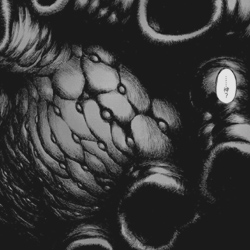
19. Is the Idea of Evil canon?
Yes, it is. We see it at the end of episode 82, titled: "God of the Abyss", when Griffith descends into the abyss. What throws people off is that episode 83, which is the key episode that reveals tons of details about the Idea of Evil (including its name), was not included in Volume 13. It was published in Young Animal back in 1996, but Miura felt it revealed too much about the world, too early into the story.
However, that removal doesn't affect the Idea of Evil's existence, since it is still shown in the manga. And it has been indirectly referenced a few times since then. For example, Void makes a direct reference to it during the Eclipse as "the god born of man". Another case is in volume 24, when Flora explains to Guts that he's mistaken about the way beherits work. She tells him it's not like they can be activated if you find the right way, rather they are tied to the will of their true master: the one who sent them into the world. An even greater existence than the God Hand. That master decides when and how they should activate, and makes it so they are where they are needed at that time.
Another thing worth noting is that nothing that was revealed in episode 83 has been contradicted or "retconned" by the story so far, even though it has considerably developed over the past 21 years. As to whether we will really see the Idea of Evil again, as opposed to mere hints of its existence, we don't know. When asked about it back in 2009, Miura said he wasn't sure if we'd see it in the story again.
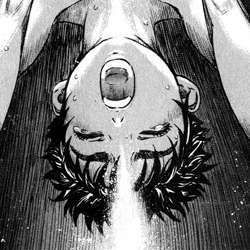
20. Casca enjoyed the rape.
This is probably my least favorite topic, and it comes up more often than you'd think. After the sacrifice, Casca was in disbelief at what Griffith had done to their group. Then she watched her friends massacred by monsters. After a harrowing escape and fight, her weapon is broken, her armor is ripped off of her, leaving her defenseless, and she's grabbed by the monsters, and falls unconscious by the horror of what she's enduring.
Femto takes her unconscious body, gropes her until she wakes up, and after that she's shown confused, then in pain, crying, bleeding from her genitals, voicing her anguish and saying "no". I'm not sure what about this scene makes people think she's supposed to be enjoying being violated, while her lover is pinned down and forced to watch. It's a scene of horror, made to horrify the reader.
And I mean, the ordeal shattered her mind and made her uneasy around men. It's the basis for her insanity over the past 27 volumes. While already obvious, this is also directly shown during Farnese and Schierke's recent journey into Casca's mind, where Femto appears as a monstrous falcon and is described as the one responsible for her state.
The rape is also incidentally the key moment that gave birth to Guts' Beast of Darkness. The scene that's burned into his mind. And just so it's clear, the reason Casca ran towards Griffith in volume 22 isn't that she bears no beef against him for raping her. As we explained earlier, it's because in her insane state she only recognizes her son in him, regardless of his physical appearance. She otherwise doesn't know who that face belongs to.
"Casca was already raped by apostles when Femto got to her"
There's no indication that Casca was raped by the apostles who captured her. If she'd already been raped by everything around her at that point, she'd have been torn into pieces, lanced... it would have been grotesque. Raping her with monstrous appendages would have either killed her outright or severely wounded her. But that's not how things are depicted. She's shown as bleeding, but we see several cuts from the claws holding her on her thighs. If it had been from penetration by a monster's penis, we can assume it would be more than a trickle of blood…
Furthermore, from a narrative perspective, having the rape happen off page completely deflates the tension of the scene. Femto taking his "turn" after a bunch of random scum would completely nullify the dramatic tension of the moment. The entire scene hinges on the fact we don't know whether she will be raped or not. She had been in that situation many times before, like with Wyald, and every time it was a close call but she escaped it. It's the same here, with the apostles about to impale her in front of Guts, who rushes to her aid but is stopped. They are interrupted at the last second, and she's saved. Same as it's always been. But then Femto arrives and proceeds to violate her in front of Guts. That dashed hope is the reason that scene is so powerful. The entire thing is constructed specifically to stab you in the heart at the last moment, and then twist the knife. That is why the reader can so effectively relate to Guts and identify themselves with him. They get to watch this impossibly long scene, powerless to make it stop. Just like Guts.
The idea that Femto was number 12 in the queue, aside from the fact there wouldn't have been anything left but dispatched body parts for him to play with, completely ruin the concept of the scene. It wouldn't have any tension anymore.
We've said the same in several threads by this point, and a regular retort I've seen to this line of reasoning is that in Casca's flashbacks, it's always the apostles she sees visions of -- not Femto's rape. That's because they're the ones who sexually assaulted her, made her powerless, stripped her of armor, killed her friends. Femto's rape is the thing that destroyed her mind. It's probably a memory that's buried deep in her mind (in fact we're still not even there yet in the current episodes). That's why it was never Femto in her flashbacks. Furthermore, it would dilute the power of that vision if it were recalled at every instance of assault. And once again, when Farnese and Schierke ventured inside Casca's nightmare to piece her mind together, the "king of the monsters" they had to face at the end represented Femto.
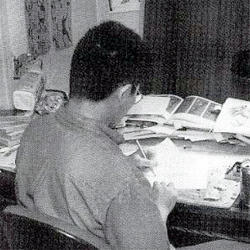
21. I've heard weird rumors about Kentarou Miura. How can I know which are true…?
Miura is a hermit who doesn't reveal much about himself or his process
There are many variations on a theme that Miura has never been photographed except in the 1996 Illustrations File interview and doesn't grant interviews, making him an enigmatic figure in the manga world. While it's true that Miura works laboriously indoors on Berserk and is quite camera shy, photos of him do pop up every few years. He has also left details about his interests and daily life in Young Animal comments across the past 30 years, along with giving a sizable number of interviews, where he's answered questions about his work schedule, influences, among many other topics. You can find our incomplete listing of Miura's interviews here, which is up to 17.
How Miura does or doesn't spend his time during hiatuses
It's pretty regular to see people complaining that Miura spends too much time on the art, and that it must be the reason for the delays in its release schedule. And indeed, Miura has explained how much time he spends on each page (1 per day in 2011). But that alone doesn't explain the hiatuses. What it explains is that Berserk is now published once a month instead of twice a month. That's a result of both the fact that the art has gotten insanely detailed over the years, and also the fact Miura is now 52 years old and needs to pace himself. He cannot work for over 80 hours a week like he used to.
As for how Miura spends the hiatuses exactly… well, we don't know for sure. Again, he is now over 50, and after spending most of his adult life working 6 days a week without ever taking any vacations, he probably needs to go a little slower. However people really shouldn't get the idea that he simply relaxes during that time, even though he would have every right to. He's said before that he works even when the prepublication is halted, and we've been told that he implicated himself in side products like the recent Berserk TV Series and light novel. We can also speculate that, as the series is reaching its peak and many elements will have to be tied together coherently, Miura needs time to plan things out so that they fit together well until the ending.
"Miura lost to Idolm@ster?"
In December 2008, Miura commented in Young Animal that he bought an Xbox 360 along with the game Idolm@ster. He did it because he was bored and lonely, and he'd watched a video series on Nico Nico Douga, the Japanese equivalent of YouTube, that was inspired by the game. That's it. That's literally all there is to this notion. It's the only time he's ever mentioned it, nine years ago. And I mean, there was a hiatus not long after that comment, but the publication rhythm had already been slowing down for five years at that point, so it was nothing new. And the rhythm basically stayed the exact same afterward. So that game was not a factor in it at all.
Besides, these comments in Young Animal aren't meant to say anything official about the series. They are comments about the author's life and opinions. We have a thread where we've translated a bunch of them on skullknight.net, so I invite you to check them out and see for yourselves. For example, Miura's ninth comment ever in Young Animal, in 1993, was about playing Mario Kart. Over the years he's posted about how much he could bench press, about loving Susumu Hirasawa's work, about Saint Seiya, Devilman, Star Wars, Sakura Taisen, Evangelion but also about stopping his diet to eat chocolate, going to a tea shop or about wondering what PC to buy. In 1996 he was bothered because a friend had deleted his Vandal Hearts save file. In 2001, he announced he had bought a PS2 and was playing Armored Core 2. It goes on and on.
I can't tell you why some people seem to love this joke so much, but it certainly feels pathetic to anyone who follows Berserk closely. This misconception has become the rallying point for people impatient and frustrated about the release schedule. Regardless of the reality of it, it's a low-hanging fruit that this group likes to point and laugh at, as I assume, a catharsis for their pain at waiting for episodic releases.
Update (Aug 2019): In an interview over the summer, Miura said that he had only ever played one Idolm@ster game, the one he referenced in the 2008 comment.
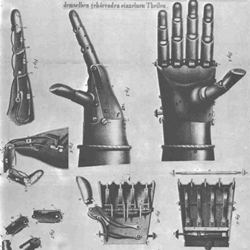
22. Guts is based on Götz von Berlichingen
There was a noble from Germany in the 14th century named Gottfried von Berlichingen. He was an imperial knight, a mercenary, and a poet. One of his nicknames in later life was "Götz of the Iron Hand", because he had lost his right arm to cannon fire during a battle. He had a prosthetic arm made so that he could still hold a shield in battle.
When some people learn about this, they figure it must be the inspiration for Guts in Berserk. Similar sounding name, an artificial arm… must be it, right? Well, here's what Miura said when he brought it up himself during an interview in 1997:
"When I found out about it, I thought it was a strange coincidence. I don't know if he shot arrows from it. It was especially uncanny because I had already started Berserk. I wasn't really thinking of anybody at the time I created Guts."
And sure, it is quite a coincidence. But our friend Gottfried wasn't the only one with a prosthetic arm in the middle ages, nor the first one either. More importantly, Miura has never made a secret of his influences. He talks about them in almost every interview. He's been upfront with the exact notions he had for Guts and Griffith when he was creating them, naming Rutger Hauer's character in various Fantasy and Sci-Fi movies for Guts' appearance, for example. If his main character were truly inspired by Götz, then Miura would have no reason not to say so upfront.
Now for a bit of trivia. If you want to know where Miura got the idea of a cannon-arm, the answer lies with science-fiction influences. Miura was writing sci-fi stories before Berserk, but publishers weren't interested in that genre at the time. His previously published work was NOA, a story starring a cyborg… with a cannon hidden in his cybernetic arm. A few years later, Berserk was published, starring Guts… with a cannon arm. So if you really want to pinpoint the inspiration for that, my advice is to look no further than COBRA, a super popular manga by Buichi Terasawa that was adapted as a TV series in the 1980s.
23. Episode < Chapter < Arc
While many series refer to the individual issues as chapters, Miura uses his own structure and terminology. Berserk is a continuing series that is divided into episodes, chapters, and arcs. These categorical divisions are part of the title of each and every release. They serve as an editorial structure for Berserk's story that is used like this: Each Episode is a part of a Chapter which is a division of an Arc.
When the episodes are serialized in Young Animal, the structure looks something like this:
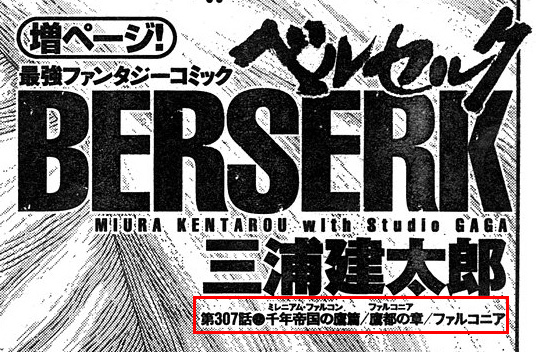
The portion outlined in red reads like this: 第307話 · 千年帝国の鷹篇 / ファルコニアの章 / ファルコニア ... [Episode #307 -- Millennium Falcon Arc / Chapter of Falconia / Falconia.] The 307 is preceded with 第 which means "number" and then designated with a 話 which translates to "counter for stories, episodes of TV series, etc." And Falconia is designated with a 章 which translates to "chapter".
As of this post, the series has had 5 arcs (Black Swordsman, Golden Age, Conviction, Millennium Falcon, Fantasia), 6 chapters (Lost Children, Bound in Chains, Birth Festival, Chronicle of the Holy Evil War, Falconia, Elf Island), and 360 episodes. A full listing of this structure, along with the Japanese and English translations of each, can be reviewed here. It is worth noting that the current nomenclature started when the magazine the series is prepublished in transformed from Animal House into Young Animal. This means the first episode was published in volume 5, but previous issues were not designated as such.
Last edited: